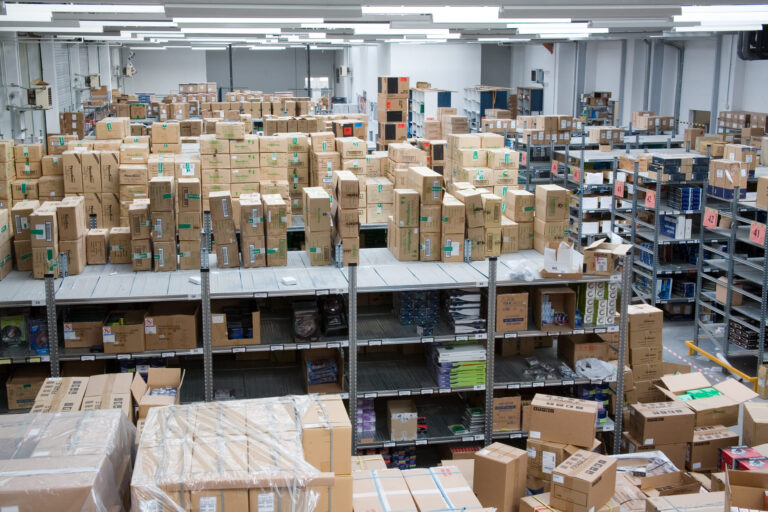Warehouse Order Picker & Order Picking Methods Guide: Boost Speed & Accuracy

Warehouse order picking (the process of selecting and retrieving items from storage to fulfill customer orders) is one of the most labor-intensive and critical tasks in a warehouse. Order picking can account for over half of a distribution center’s operational costs, so improving speed and accuracy directly boosts productivity and customer satisfaction. In practice, a warehouse order picker (whether a human associate or an automated machine) travels the facility to locate and pick products for each order. Key metrics include pick rate (items picked per hour), order accuracy rate, and time per order, tracking these helps managers pinpoint bottlenecks and optimize workflows.
What is Warehouse Order Picking?
In a warehouse context, an order picker (sometimes called a “picker-operator”) refers to the person or equipment that gathers items from inventory to fulfill orders. The order picker may use tools like forklifts, pallet jacks, carts, or automated systems. Improving the order picker’s efficiency (for example by providing better tools, training, or optimized routes) is crucial because picking directly impacts customer satisfaction and profitability.
Key Metrics to Track
To measure and improve picking operations, track metrics such as pick rate (items per hour), order accuracy, and time per order. These indicators reveal how quickly pickers work and how often errors occur. For example, a high order accuracy rate means fewer returns and happier customers, while a higher pick rate indicates better productivity.
Warehouse Order Picking Methods
Choosing the right picking method depends on factors like warehouse size, order volume, and product mix. Below are the most common warehouse order picking methods used to boost efficiency:
1. Batch Picking
In batch picking, a worker gathers the same item for several orders in one go. It’s ideal when many orders share the same products, helping reduce unnecessary walking and boosting pick rates.
2. Zone Picking
Each employee is assigned to a specific area (or “zone”) and picks only the items located there. If an order includes products from multiple zones, it moves from one picker to another. This method is perfect for high-SKU environments and complex orders.
3. Wave Picking
This strategy organizes picking into scheduled “waves” based on shipping deadlines, carrier pick-up times, and product locations. It helps balance workload, streamline shipping, and improve order accuracy in busy operations.
4. Discrete Picking
Also called single-order picking, this method has one worker pick all items for one order before moving to the next. It’s a straightforward approach that works best for small warehouses with low order volume.
5. Pallet Picking
This method involves moving entire pallets instead of individual items, usually with forklifts. It’s commonly used for bulk shipments, especially in B2B or wholesale operations.
6. Single Order Picking
Pickers handle one order at a time, collecting each item needed before moving on. This manual method works well in small-scale operations with minimal SKUs and simple orders.
7. Cluster Picking
Instead of picking one order at a time, workers gather items for multiple orders in a single trip, sorting them into designated containers. It’s a time-saving strategy, especially when paired with good inventory software.
8. Pick-and-Pass
A variation of zone picking, this method has orders passed between zones. Each picker adds the relevant items from their area before handing it off to the next zone. It creates a production-line-style flow, increasing speed and reducing confusion.
9. Hybrid Picking
Many warehouses combine two or more strategies to get the best results. For example, combining zone and batch picking allows teams to work within specific zones while fulfilling multiple orders at once—maximizing speed and accuracy.
Automated Picking Systems
Modern warehouses also use technology to boost picking. Pick-to-light systems use light indicators on racks: a picker scans the order tote and lights up to show which SKUs to pick and how many. Voice picking sends verbal instructions to headset-equipped pickers, guiding them hands-free and confirming picks. Mobile barcode scanners are also common: they display optimized pick paths and verify each item, immediately alerting pickers to errors. Finally, collaborative mobile robots (AMRs) can automate motion of carts or follow pickers through the warehouse. Robots carry bins or pallets, reducing walking time and increasing throughput. These technologies complement the human picker by improving speed and reducing mistake
Best Practices for Efficient Warehouse Order Picking
To streamline your picking process, try these best practices:
- Use a Smart Warehouse Management System (WMS)
A WMS helps optimize pick lists, manage orders in real-time, and keep track of stock. This reduces errors and helps workers know exactly what to pick. - Equip Workers with the Right Tools
The right equipment makes picking more efficient:
- Forklifts and pallet jacks for heavy or high items.
- Conveyor belts for fast sorting.
- Barcode scanners and RFID technology for real-time tracking.
- Wearable devices to guide workers and reduce paper-based systems.
- Forklifts and pallet jacks for heavy or high items.
- Improve Warehouse Layout
Keep high-demand items near the packing station. Group frequently picked products to reduce travel time and worker fatigue. - Monitor Key Metrics
Track important performance indicators like:
- Pick accuracy rate
- Order cycle time
- Inventory turnover
- Pick accuracy rate
Use these metrics to pinpoint bottlenecks and optimize workflows.
- Consider Outsourcing
If your operation is growing, outsourcing certain parts of the process to a third-party logistics provider (3PL) can help. A hybrid approach can also free up space and streamline operations.
How to Improve Warehouse Picking Speed and Accuracy
Automation and data analytics are shaping the future of picking. Smart automation is becoming standard: picking robots and machine learning are used to improve speed and accuracy. For instance, collaborative robots can follow pickers and carry inventory, while AI algorithms predict which items to pick next. Wearable tech and AR glasses are also emerging, guiding pickers to items. Overall, adopting autonomous mobile robots (AMRs) and AI for demand forecasting can dramatically boost order picking efficiency.
In summary, optimizing warehouse order picking with the right methods and tools is crucial because picking is both costly and customer-facing. By matching a picking strategy to your warehouse and continuously improving processes, companies can cut labor costs, reduce errors, and get orders out faster – directly improving profitability and satisfaction.
Frequently Asked Questions (FAQ) – OLIMP Warehousing
Q: Are nitrile gloves suitable for warehouse order picking?
Yes, nitrile gloves are durable and provide a good grip, protecting workers from minor injuries while handling materials.
Q: What are the types of warehouse order picking systems?
Common systems include batch picking, zone picking, and wave picking. Each one is suited to different types of operations.
Q: How is wave picking different from other picking types?
Wave picking organizes orders into time-based “waves,” helping to optimize labor and reduce delays compared to single-order or batch picking.
Q: What is the best equipment for warehouse order picking?
It depends on your operation. For pallet picking, forklifts work well. For piece picking, autonomous smart carts or AGVs are best.
Q: How do you measure productivity in voice order picking?
Track key metrics like orders picked per hour, accuracy rate, and time spent per order, using a WMS to monitor progress.
Q: How does “pick to light” help improve picking efficiency?
Pick to light uses light indicators to guide workers, minimizing errors and speeding up picking.
Q: What are the benefits of using robots in order picking?
Robots increase speed, reduce errors, and operate without breaks, improving safety and lowering labor costs.
You may be interested in

Backorder vs Out of Stock: Meaning, Differences & Management Strategies
Backorder vs Out of Stock – these two terms can be a source of confusion for consumers and a critical decision point for businesses. If you’ve ever tried to buy something online and seen it listed as “out of stock,” you know the disappointment of not being able to order it. On the other hand, […]

Finding the Right Distribution Warehouse: An Essential Guide for Your Business
Choosing the right distribution warehouse is a pivotal decision that can make or break your supply chain. The warehouse you select will directly affect your delivery speeds, shipping costs, and customer satisfaction. With so many options (from local facilities to nationwide 3PL networks), it’s essential to know what to look for. This guide explains what […]

Direct-to-Consumer (D2C) Fulfillment Guide
Direct-to-consumer (D2C) fulfillment means shipping products directly from a brand’s own warehouse or fulfillment center straight to the customer. This direct shipping model bypasses traditional retailers and distributors, giving brands full control over packaging, shipping speed, and the customer experience. By eliminating middlemen and retail markups, D2C fulfillment can improve profit margins and strengthen customer […]
Ready to streamline your warehousing needs?
Request a quote today and discover how OLIMP's tailored solutions can optimize your operations